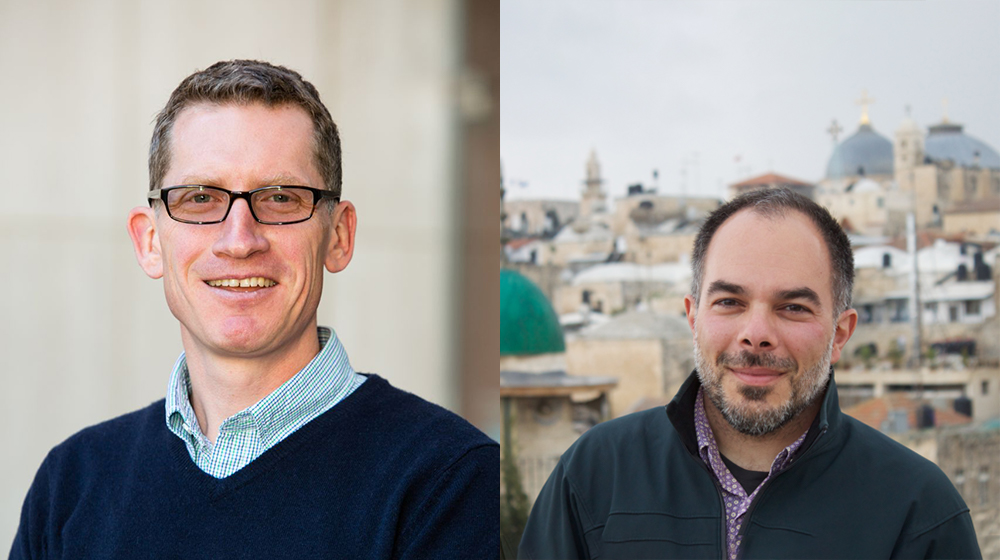
I get to work with world-class biologists, and past and future Nobel laureates. That’s what keeps me here.” Adam Renslo, PhD (Pictured, left)
Photo credit (left image): Elisabeth Fall.
An unknown “binding site,” recently discovered in an ion channel that sends pain throughout the body, may be the perfect target for drug treatment, say two UCSF scientists who describe the interaction of molecules with the ion channel as “unprecedented.”
Using X-ray crystallography, Daniel Minor Jr., PhD, and Adam Renslo, PhD, observed two low-molecular weight organic compounds, known as small molecules, bind to a “pocket” in an ion channel from the K2P family. This ion channel, called TREK1, affects a wide range of human maladies including pain, moods, mental retardation, migraines, arrhythmia, and hypertension.
“This was totally unexpected,” says Dr. Minor. “This type of binding in K2P channels has never been seen before. It’s like a baseball glove, and we can see the ball in the pocket – where the molecules interact with the protein. We can see how to make new molecules that fit this glove and no other glove.”
No drugs currently exist to target this particular channel – a situation Dr. Renslo and Dr. Minor hope to fix with the help of the UCSF Weill Trailblazer Award. The next step in their promising research is to develop prototype drugs in the form of small molecules to target the K2P channel, so the timing of the Weill award was perfect.
“To take research in a new direction is very difficult with traditional funding sources,” Dr. Minor says. “You have to have 90 percent of a project done to get it funded. As a consequence, the high-risk, high-return awards like the Weill awards are phenomenal. They arrive quickly and allow you to move quickly.”
The researchers note that each brings his own expertise to the project, and neither could execute the project on his own. “I’m a chemist,” says Dr. Renslo. “My lab specializes in designing and making new small molecules. That, and my background in drug discovery, is what I bring to the table. Dan’s lab is one of a handful in the world that can study these ion channels in molecular detail.”
Dr. Minor agreed, noting that his lab is pursuing a research program that combines structural biology, ion-channel functional studies, and chemical biology approaches to develop pharmacology to target the channels.
Another advantage to the award is that it allows the scientists to place their research on ion channels front and center.
“The progress we have made so far has been one step forward, three steps back, so we’ve been limping along,” says Dr. Renslo. “This award will allow us to really hit the gas pedal over the next year. With the new molecules we are now making, we can pursue new funding for our collaboration. Winning the Weill Trailblazer Award has been crucial to our work, and we are very grateful.”


